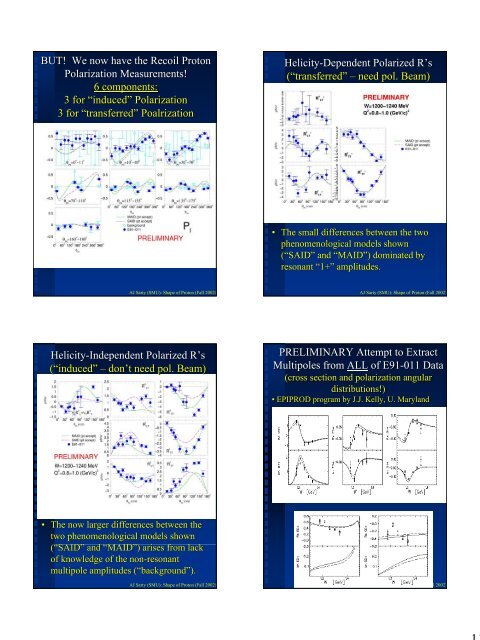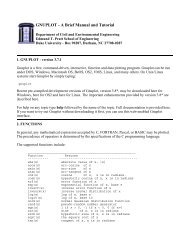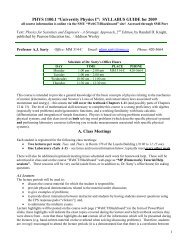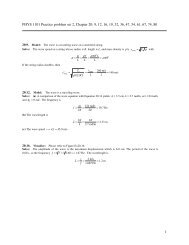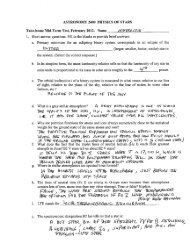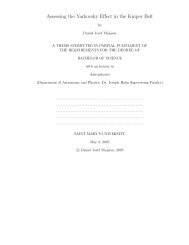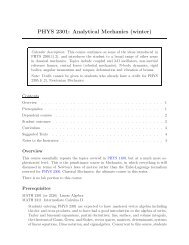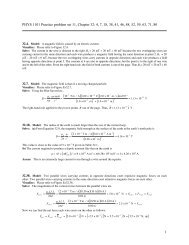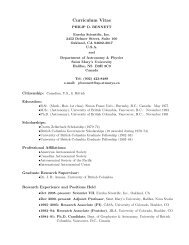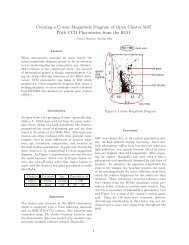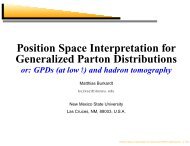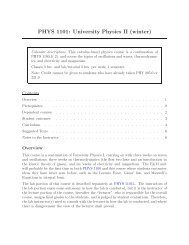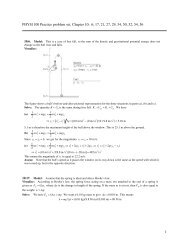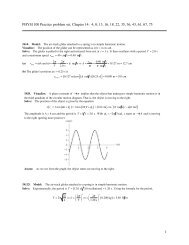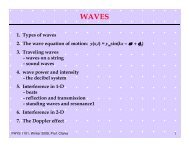Measuring the Shape Proton Measuring the Shape Proton
Measuring the Shape Proton Measuring the Shape Proton
Measuring the Shape Proton Measuring the Shape Proton
- No tags were found...
You also want an ePaper? Increase the reach of your titles
YUMPU automatically turns print PDFs into web optimized ePapers that Google loves.
BUT! We now have <strong>the</strong> Recoil <strong>Proton</strong>Polarization Measurements!6 components:3 for “induced” Polarization3 for “transferred” PoalrizationHelicity-Dependent Polarized R’s(“transferred” – need pol. Beam)• The small differences between <strong>the</strong> twophenomenological models shown(“SAID” and “MAID”) dominated byresonant “1+” amplitudes.AJ Sarty (SMU): <strong>Shape</strong> of <strong>Proton</strong> (Fall 2002)AJ Sarty (SMU): <strong>Shape</strong> of <strong>Proton</strong> (Fall 2002)Helicity-Independent Polarized R’s(“induced” – don’t need pol. Beam)PRELIMINARY Attempt to ExtractMultipoles from ALL of E91-011 Data(cross section and polarization angulardistributions!)• EPIPROD program by J.J. Kelly, U. Maryland• The now larger differences between <strong>the</strong>two phenomenological models shown(“SAID” and “MAID”) arises from lackof knowledge of <strong>the</strong> non-resonantmultipole amplitudes (“background”).AJ Sarty (SMU): <strong>Shape</strong> of <strong>Proton</strong> (Fall 2002)AJ Sarty (SMU): <strong>Shape</strong> of <strong>Proton</strong> (Fall 2002)


